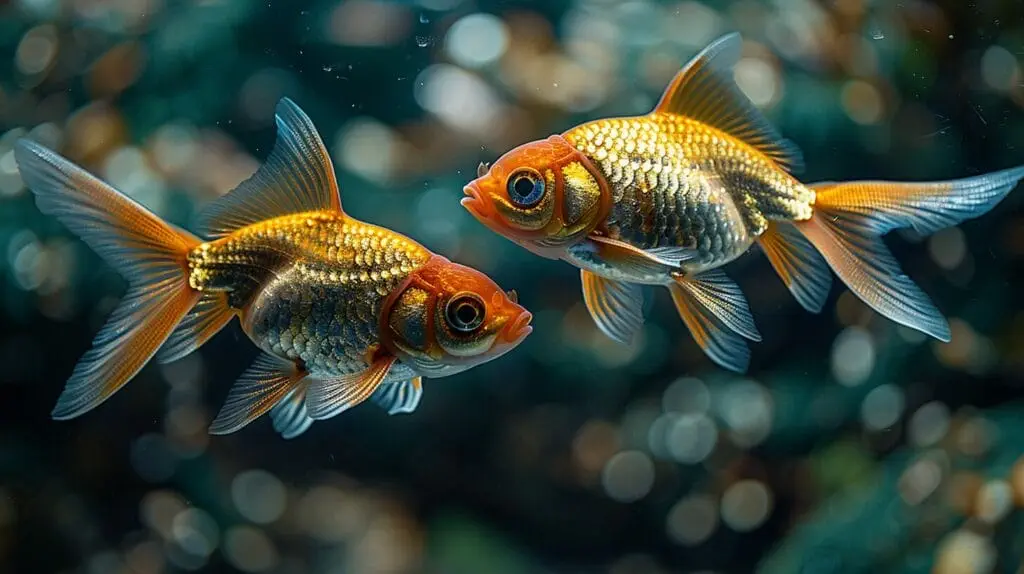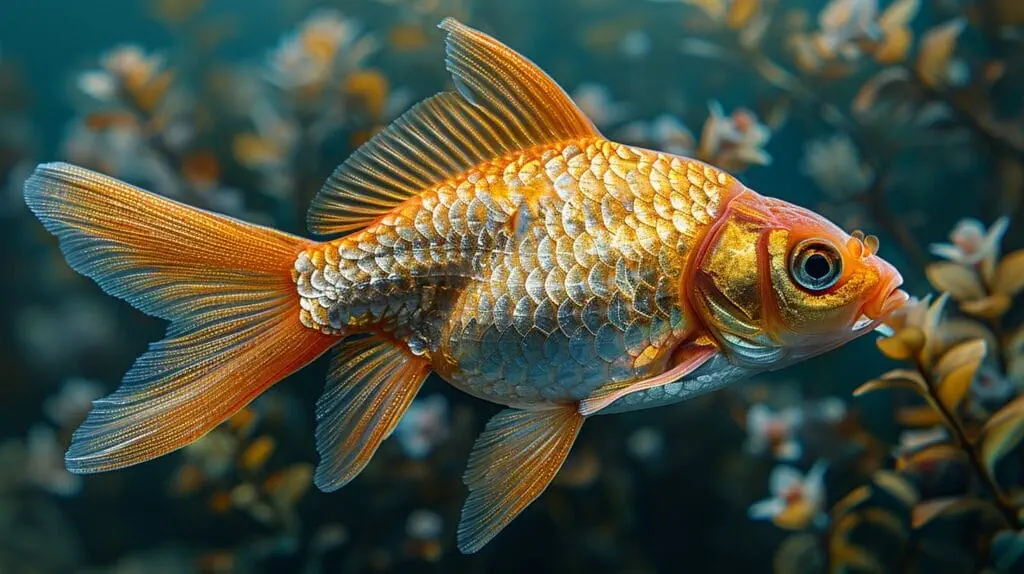Telling a male comet goldfish from a female can be trickier than you might think! While size or color alone often mislead, distinct physical traits and behaviors, known as sexual dimorphism, offer reliable clues. Goldfish thrive in clean water, which helps make subtle features like breeding bumps and fin shapes more visible. Understanding these differences is key whether you’re planning to breed your fish or simply want to know more about your aquatic companions.
As a fish biologist and longtime goldfish breeder, I’ve learned to spot the tell-tale signs. Males develop tiny white bumps (tubercles) when mature, while females often appear rounder, especially when carrying eggs in the spring. This guide provides clear, easy-to-follow tips using simple tools like a fish net and magnifying glass to help you confidently sort out the males from the females in your tank.
Key Takeaways
- Male Signs: Look for small white bumps (breeding tubercles) on gill covers (operculum) and pectoral fins, generally appearing around 9-12 months. Males often have slimmer bodies and may exhibit chasing behavior during spawning season.
- Female Signs: Females typically have rounder, fuller bodies, especially noticeable when carrying eggs. Their vent (opening near the anal fin) may appear wider or slightly protruding when ready to spawn.
- Maturity Timeline: Goldfish generally reach sexual maturity between 6 and 12 months, hitting their peak reproductive state around 2 years old, though this can vary based on care and genetics.
- Behavioral Clues: During spring or spawning conditions, males actively chase females, often nudging their undersides to encourage egg release.

Age and Maturity: When Can You Reliably Tell the Gender?

Patience is key when determining the sex of your comet goldfish. While they can start showing signs of maturity around six months to a year old, it’s often easier to tell once they are fully mature. Factors like water quality, diet, and genetics influence how quickly your fish develop. Generally, distinguishing features become clearer as the fish approach and pass one year of age.
| Age Range | Gender Identification Difficulty | Sexual Maturity Stage |
|---|---|---|
| 0–6 months | Very Difficult / Impossible | Immature |
| 6–9 months | Difficult | Approaching Maturity |
| 9–12 months | Moderately Easy (Tubercles may appear) | Reaching Maturity |
| 12+ months | Easier / Clear | Mature |
| 2+ years | Usually Clear | Peak Reproductive State |
Identifying Male Comet Goldfish

The most reliable sign of a male comet goldfish is the appearance of breeding tubercles. These look like small, white, raised dots, similar to grains of salt. You’ll typically find them on the gill covers (operculum) and along the leading edge of the pectoral fins. I first noticed these on my own fish when they were about nine to twelve months old – a clear signal they were males ready to breed.
Beyond tubercles, males often have a slimmer, more streamlined body shape compared to females. During the breeding season (usually spring, or when conditions mimic it), male goldfish become noticeably more active, often chasing females around the tank or pond. I’ve observed males persistently nudging females, attempting to stimulate them to release eggs (roe). This chasing behavior is a strong indicator of a male fish during spawning times.
Identifying Female Comet Goldfish
Female comet goldfish generally possess a rounder, plumper body shape than males. This difference becomes particularly pronounced during the breeding season when their bellies swell as they become full of eggs. Looking from above, a female might appear wider or asymmetrical.
While females lack breeding tubercles, their vent (the small opening located just before the anal fin) can offer clues. As a female gets ready to spawn, her vent may appear slightly larger, more swollen, or slightly protruding compared to a male’s. Behaviorally, while males do the chasing, females might be seen exploring potential egg-laying sites among plants or tank decorations. They might even appear to “dig” or nudge surfaces.
Vent Sexing: A Closer Look for Confirmation
For a more definitive answer, especially outside the breeding season when tubercles might fade, you can try vent sexing. This requires gently examining the fish’s underside. You can carefully net your fish and place it in a small container with tank water, or briefly hold it (with wet hands or in a soft, wet towel) to observe the area just in front of the anal fin.
Use a magnifying glass if needed. Look closely at the vent (also known as the genital papilla). In males, the vent is typically smaller, concave (curving inward), or slit-like. In females, especially mature ones, the vent tends to be rounder, larger, convex (slightly protruding outward), or like a raised ridge. You can also check the anal and pelvic fins; some sources suggest males might have slightly longer or more pointed fins, while females’ may be shorter or rounder, but vent shape is generally more reliable than fin shape alone.
Understanding Breeding Behavior

Observing how your comet goldfish interact can strongly indicate their gender, especially during spawning season.
- The Male’s Role: Typically leaner, the male initiates the chase. He pursues the female relentlessly, often nudging her flank and belly area. This action helps stimulate her to release eggs. Once eggs are released, the male releases milt (sperm) to fertilize them.
- The Female’s Role: Carrying the eggs makes her appear plumper. When ready, and stimulated by the male’s chasing and nudging, she will scatter her sticky eggs, often among plants or spawning mops, where they adhere and can be fertilized.
- The Spawning Dance: This process looks like an energetic underwater chase or dance. Multiple males may chase a single female. Spotting this distinct behavior is a very reliable way to identify males (the chasers) and females (the chased) when they are ready to breed.
Watch an example of goldfish breeding behavior
Conclusion
Successfully identifying male and female Comet Goldfish enhances your experience as an aquarist, whether your goal is breeding or simply understanding your pets better. By observing key indicators like the presence of breeding tubercles on males, the rounder body shape of females, distinct vent characteristics, and specific breeding behaviors like chasing, you can confidently determine the sex of your fish. Remember to be patient, as these signs are most evident in mature fish, especially during spawning season. This knowledge allows for better tank management and supports any breeding aspirations you might have.
Tip: Careful observation, particularly during spring or warmer water periods, combined with a gentle closer look if needed (using a magnifying glass for vent sexing), will yield the best results. Happy fishkeeping!
Frequently Asked Questions
How can you easily tell if a goldfish is male or female?
The easiest visual cue during breeding season is the presence of small white bumps (breeding tubercles) on the gill covers and pectoral fins of males. Females typically look rounder. Outside breeding season, carefully examining the vent shape (male: smaller, concave; female: larger, convex/protruding) is the most accurate method.
Do male goldfish chase female goldfish?
Yes, male goldfish actively chase females during the spawning season (often spring or triggered by specific water conditions). This chasing behavior is crucial for stimulating the female to release eggs for fertilization.
What are breeding tubercles on a goldfish?
Breeding tubercles are small, raised white spots that appear primarily on the gill covers (operculum) and the front rays of the pectoral fins of mature male goldfish during the spawning season. They feel slightly rough to the touch and are a key indicator of a male fish ready to breed.
How can you accurately determine the sex of a goldfish using the vent?
You need to gently observe the fish’s underside near the anal fin. The vent (genital papilla) in males is usually small, narrow, and curves inward (concave). In females, it is typically larger, rounder, and may slightly protrude outward (convex), especially when ready to lay eggs. Using a magnifying glass can help see this detail clearly.
At what age do goldfish reach sexual maturity?
Common varieties like Comet goldfish typically reach sexual maturity between 9 months and 1 year old. Some slower-growing or fancy varieties might take longer, potentially up to two or three years. Maturity allows them to display breeding behaviors and physical characteristics like tubercles.






